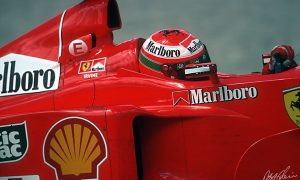
©F1i
BEND IT LIKE FORCE INDIA
Torsion bars, which are regularly adjusted and replaced over the course of a grand prix weekend, are made of metal, usually an alloy of steel. For each bar, one end is attached to the survival cell while the other connects to the rocker linked to the upper suspension arm. When the car experiences a compressive stress (in cornering for example), the torsion bar bends in order to limit the movement of the suspension.
While the two torsion bars of the front suspension are mounted longitudinally on most cars, this is the not the case on the Force India where they have a vertical setup within the front end.
Besides its packaging purpose, the layout also allows for one of the lower arms of the wishbone leg to connect with the mounting of the torsion bar in the lower part of the chassis, which is a sturdy and rigid area of the monocoque.






